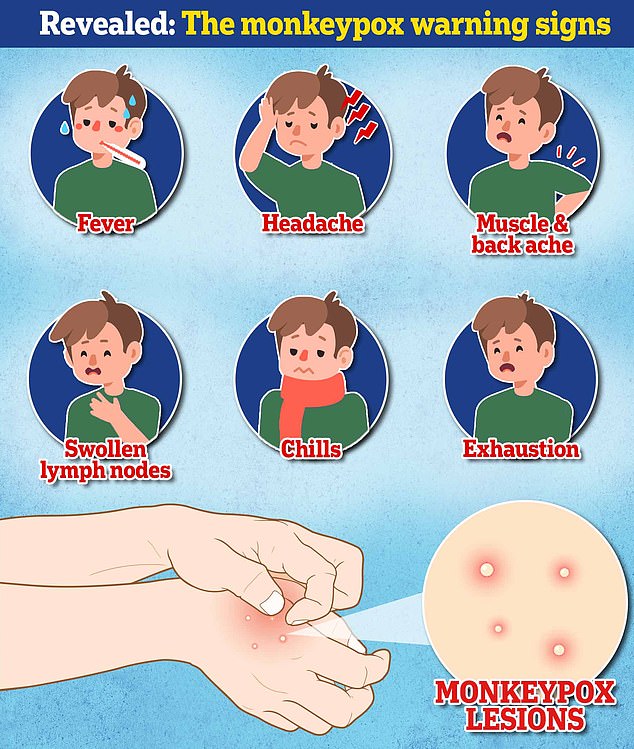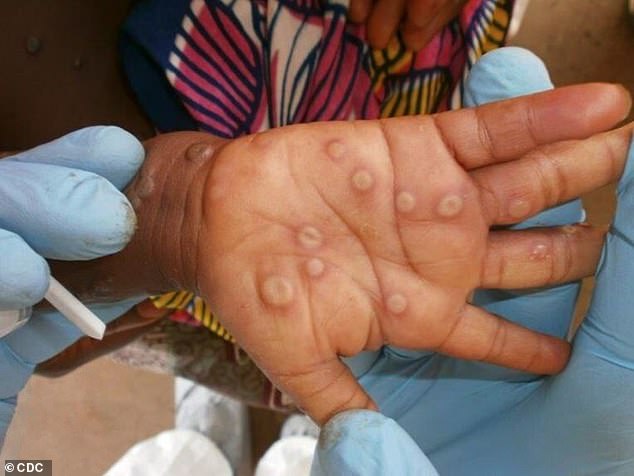For the first time, a deadly strain of monkeypox has been detected in the United States.
CDC scientists said a patient in California had tested positive for the Clade I mpox strain, which kills up to one in 10 people it infects.
The CDC said the patient had recently returned to the United States from East Africa, where there is an outbreak of monkeypox, and was treated in San Mateo County.
The patient was initially treated in hospital but has now been discharged to recover and told to self-isolate.
Officials said the risk to the public was “low,” and said the disease only spreads through direct skin-to-skin contact or with contaminated towels or bedding.
No further details about the patient were revealed, including when he returned to the US, how he became infected or his symptoms.
But scientists said they were expected to make a full recovery.
The Clade I strain is more severe than the Clade II type, which is currently circulating in the US and was behind the 2022 outbreak. That strain has a mortality rate of less than three percent and has killed 63 Americans since the outbreak of 2022.
Officials said the patient had recently returned to the US from East Africa (This is a stock image of the symptoms and does not show the patient).
In its alert, the CDC said, “The risk of clade I mpox to the public remains low and there continue to be sporadic cases of clade II mpox in the United States.”
“Casual contact, such as may be had during travel, is unlikely to present significant risks of mpox transmission.”
More than 34,000 people have been infected with Clade II monkeypox since the outbreak began in 2022, and at least 63 people have died so far.
Authorities administered vaccines to gay or bisexual men, among whom most cases were diagnosed, during the outbreak to curb infections.
But the CDC continues to record “Sporadic” cases in the United States, with 2,368 infections detected this year and 72 in the last month alone.
The overall death rate in the United States is currently 1.85 percent, and scientists say treatments and the vaccination campaign have helped keep it low.
The California patient arrived in the US from Africa, where there is currently a significant outbreak of the Clade I strain in the central and eastern regions, primarily the Democratic Republic of the Congo, with more than 47,000 suspected cases.
But cases began to spread outside the Democratic Republic of the Congo over the summer to neighboring countries such as Burundi, the Republic of the Congo, the Central African Republic, Rwanda and Uganda.

WHO officials raised the alarm about the outbreak in August and officially declared it a public health emergency.
To date, more than 50,000 cases of monkeypox have been recorded in the region’s outbreak and 1,100 people have died from infections.
Authorities are trying to stop the outbreak by rolling out vaccines to boost immunity to the virus. More than 5.85 million doses are expected to be delivered to the region by the end of the year.
And vaccines are currently being tested in Africa that are given to people after they have been exposed to the virus. Researchers are investigating whether these can stop an infection from developing.
Scientists say the spread is largely due to skin-to-skin sexual contact with rashes caused by the disease.
Symptoms take three to 21 days to develop and tend to be a rash that forms on the infected area, including the genitals, anus, chest, or hands.
Other symptoms include severe headache, fever, and muscle and back pain.
There is no cure, but doctors can treat symptoms with antiviral medications that target viruses such as monkeypox.
Patients may also receive intravenous drips and rest to help their bodies fight the disease.


